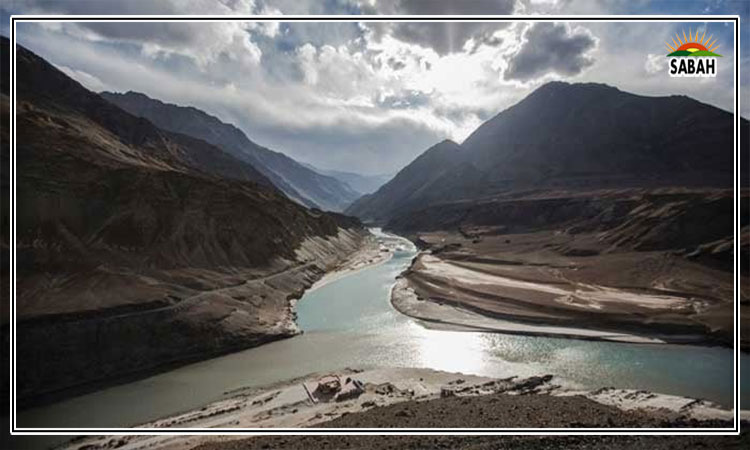Geopolitics of scarcity in South Asia…Hina Ayra
Pakistan, once recognised as a nation with abundant water resources, is currently confronted with significant water scarcity that poses challenges to its agriculture, economy, and social stability.
The per capita availability of water has experienced a drastic decline from 5,600 cubic meters in the 1950s to less than 1,000 cubic meters today, positioning the country on the verge of severe water scarcity by the year 2025. This deterioration can be attributed to several factors, including rapid population growth, ineffective management of water resources and the increasing impacts of climate change.
This predicament is further complicated by regional water disputes, internal inefficiencies, and geopolitical complexities, which increasingly elevate water as a potential instrument of power. As experts predict that the next major conflicts may occur over water, Pakistan finds itself at the forefront of this pressing issue.
The Indus River, which originates in Tibet and traverses through India and Pakistan before emptying into the Arabian Sea, serves as a crucial resource for Pakistan. The entire agricultural framework of the nation relies on this river and its tributaries: the Jhelum, Chenab, Ravi, Sutlej and Beas. The Indus Basin Irrigation System, recognised as one of the largest in the world, was initially established to foster extensive irrigation networks that support millions of livelihoods.
However, this system, devised several decades ago, is increasingly proving inadequate due to escalating demand and declining water flows. Significant silting in key reservoirs such as Tarbela and Mangla has markedly diminished their capacity for water storage. Compounding this issue are inefficient canal systems, outdated infrastructure, and widespread water theft, all of which exacerbate the ongoing crisis.
Pakistan’s groundwater resources are also being excessively depleted, predominantly for irrigation purposes, resulting in a declining water table. Climate change introduces further complications, characterised by erratic monsoon patterns, fluctuations in glacial melt and prolonged periods of drought all of which have a direct impact on water availability.
To address the pressing challenges related to water resources, Pakistan must urgently undertake a comprehensive redesign of its water infrastructure. The initiation of new dam projects, including the Diamer-Bhasha and Mohmand Dams, provides a potential avenue for progress; however, additional measures are essential. Effective water conservation practices, the adoption of modern irrigation techniques such as drip irrigation, and the implementation of appropriate urban water management strategies are critical to mitigating the ongoing crisis.
It is also imperative for the nation to investigate the feasibility of harnessing underground water reserves, promote rainwater harvesting initiatives, and construct smaller reservoirs to store excess water during flood events. Emphasising technology-driven solutions such as the establishment of desalination plants along the coastline and the recycling of wastewater should be prioritised in the national agenda. Without a well-defined, comprehensive long-term water policy, one can expect that Pakistan’s current water challenges will only intensify.
Water has increasingly become a geopolitical instrument in the region. Tensions along Pakistan’s western borders with Afghanistan and Iran are intensifying due to water-related disputes. The construction of the Kamal Khan Dam on the Helmand River by Afghanistan has resulted in a diminished flow of water to Iran, thereby straining diplomatic relations between the two nations.
Disputes also exist between Pakistan and Afghanistan concerning the Kabul River, where Afghanistan’s intentions to construct dams pose a threat to water accessibility for farmers in Khyber Pakhtunkhwa.
Iran, facing significant water scarcity challenges, often attributes its difficulties to Afghanistans actions regarding water flow from the Helmand River. The strategic alignment of Pakistan with either Afghanistan or Iran could significantly affect regional water dynamics. Non-state actors and regional proxies have also been known to utilise water resources as leverage in ongoing conflicts, which exacerbates existing tensions. If these disputes are not addressed, there is a substantial risk that they could escalate into broader conflicts, potentially involving multiple stakeholders, including global powers.
The Indus Waters Treaty (IWT) of 1960, which governs water rights between Pakistan and India, is widely regarded as a notable achievement in conflict resolution. Facilitated by the World Bank, this treaty designates the eastern rivers Ravi, Sutlej, and Beas to India, while allocating the western rivers Indus, Jhelum and Chenab to Pakistan. Nevertheless, recent years have witnessed escalating tensions due to India’s development of hydroelectric projects on the western rivers, which Pakistan perceives as contravening the treaty’s terms. Efforts to resolve this dispute through diplomatic negotiations and interventions from international organisations have so far proven inadequate.
On a global scale, the issue of water rights remains a source of significant contention. The dispute surrounding the Nile River, involving Egypt, Sudan and Ethiopia over the Grand Ethiopian Renaissance Dam, serves as a prominent example. In the Middle East, the management of the Tigris and Euphrates rivers by Turkey directly impacts water accessibility for Iraq and Syria.
The Jordan River represents another critical point of contention over the allocation of scarce water resources. Tensions are also evident in Central Asia, where upstream nations such as Kyrgyzstan and Tajikistan exert control over the water flow to downstream countries like Uzbekistan and Kazakhstan. These instances underscore the pressing necessity for international water-sharing agreements rooted in principles of sustainability and equity.
As water scarcity becomes increasingly acute, the risk of water-related conflicts escalates. Experts have indicated that future military confrontations may be driven not by oil or territorial disputes, but by competition over water resources. The impacts of climate change, which diminish natural water supplies, coupled with growing population pressures, may compel nations to adopt aggressive strategies to secure their water resources.
For Pakistan, the threat of conflict related to water resources is particularly pronounced in relation to India. The recent diplomatic strains surrounding the Indus Waters Treaty reflect an escalating mistrust that could potentially lead to conflict if not addressed with due diligence. And the western border of Pakistan is susceptible to disputes concerning diminishing water resources. If both regional and global stakeholders do not intervene effectively, the potential for conflict over water rights will increase, jeopardising stability and peace.
The water crisis in Pakistan transcends mere environmental considerations and poses a critical challenge to national security, economic stability, and regional peace. The existing Indus River system, while historically significant, is increasingly inadequate in the face of contemporary demands. It is imperative to develop novel water management strategies, implement innovative infrastructure solutions, and foster regional collaboration to avert an impending crisis.
Ongoing proxy tensions related to water issues in South Asia further accentuate the urgency of the situation. Historical precedents indicate that nations failing to secure their water resources may face severe repercussions. If Pakistan does not take prompt and decisive action, it could find itself at the forefront of the world’s first major water conflict.
Courtesy The News












